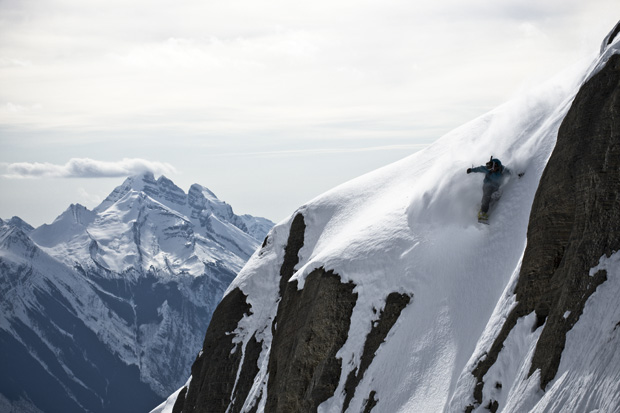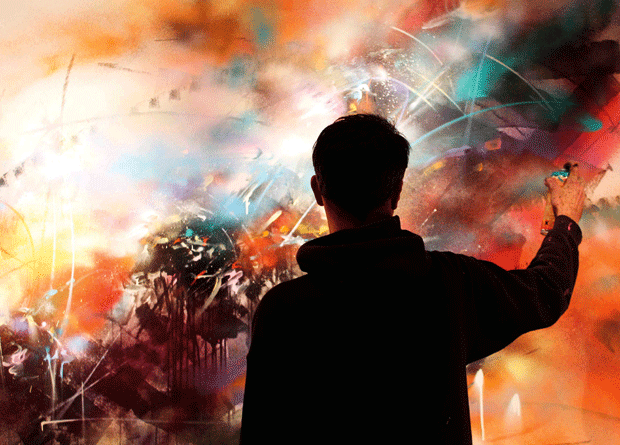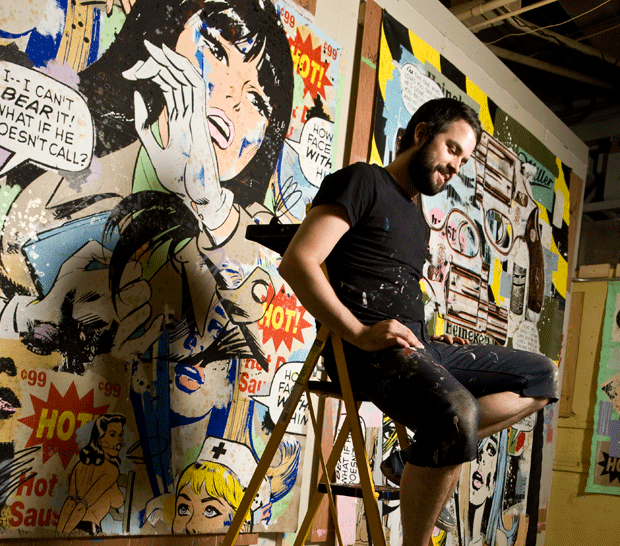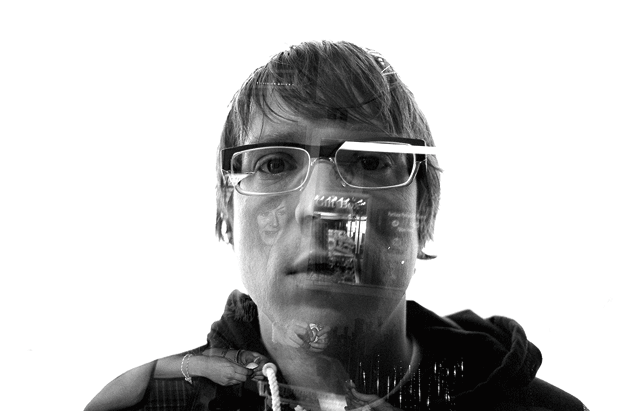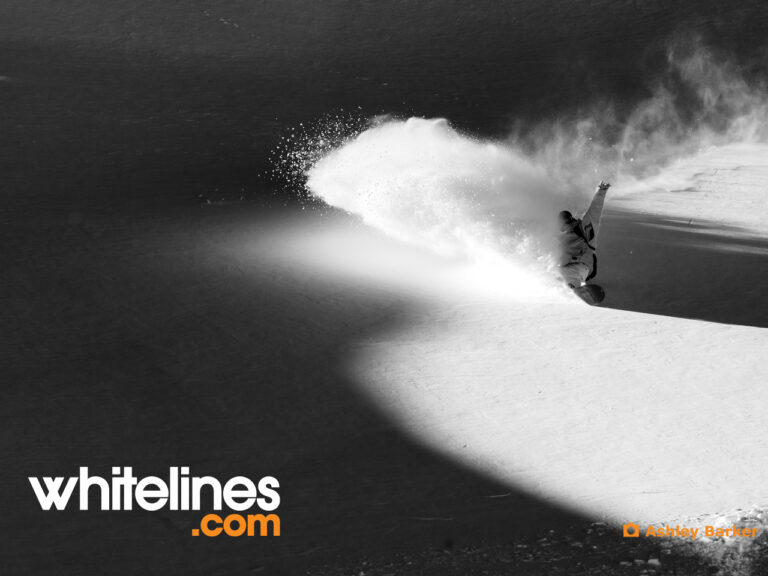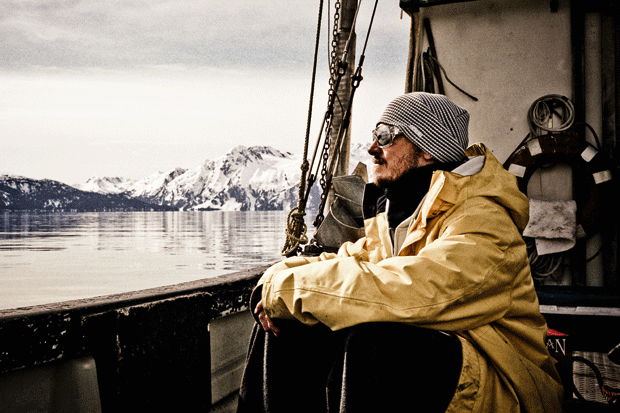Taken from Whitelines Issue 92 November 2010
Words & Photos – Dan Milner
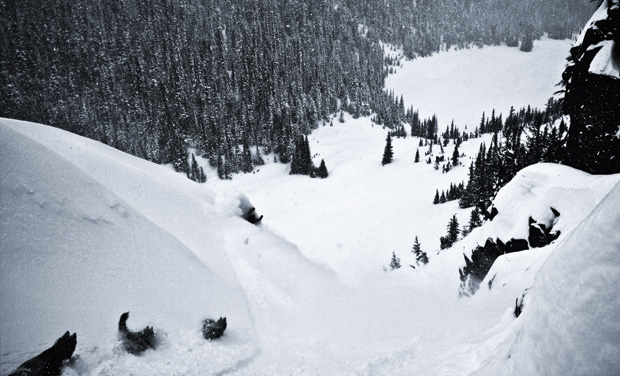
UK photographer Dan Milner has spent the past two winters documenting the Deeper film project. So when Jeremy Jones and Jonaven Moore invited him to ‘shoot’ in the wilds of Western Canada, he thought he knew what to expect… until the local wildlife showed up.
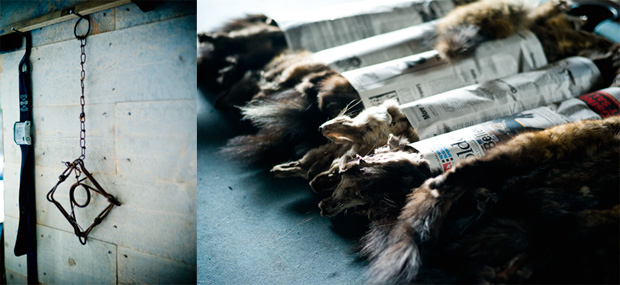
I’d like to say that the howling outside is drowned out by the clinking of beer bottles and the unruly bedlam of drunken revelry, but I’d be lying. Instead, the unmistakable cry of wolves rises from the darkness outside – a truly unnerving sound that startles us from our semi-conscious slumber. It’s the first time I’ve heard wolves in the wild – or come to think of it, ever – and despite being levelled by an exhausting day of clinging to snowmobiles I jump from my sleeping bag and push my face against the window pane to peer out into the dark. I’m excited but – considering we’re 90 kilometres deep in the wilds of Canada – also a little unsettled by the prospect that I could easily become dinner before our four-day stay is up. Forgive me for seeming soft, but being eaten is quite an alien concept to someone who grew up in Milton Keynes.
The trip I’m on is meant to be another installment of Jeremy Jones’ two-year Deeper project: using splitboards to access the backcountry in as unobtrusive a manner as possible; pushing our physical and mental boundaries; finding our limits and pushing those of big mountain riding. You get the idea. It’s not going to plan. Instead, we’re hauling our asses up impossibly steep hillsides near Golden, British Columbia, on 800cc snowmobiles – our splitboards clamped ironically to the sides of the sleds’ racks. Sure, we’re hitting the powder and we’re exploring new terrain, but we’ve yet to manage a serious hike. The boards’ climbing skins haven’t even got a look in.
With no cell-phone coverage and no electricity, life is simple; just four blokes in the middle of nowhere, surrounded by wolves”
At least the cabin we’re holed up in each night is pushing my mental boundaries. When Jonaven Moore proposed staying in a friend’s “old trapper’s cabin” I pictured a rustic log affair resplendent with Canadian old timer memorabilia – gold panning apparatus, a rocking chair on the deck, an array of tobacco pipes, that sort of thing. What we have ended up in is a real trapper’s cabin, complete with more recent memorabilia: guns, jagged metal animal traps and random bits of fur. Jason Baun, a local snowboarder and our host whose family have the trapper’s rights to this area, is telling me how you catch Pine Martins – and how only last week he accidentally trapped a wolf.
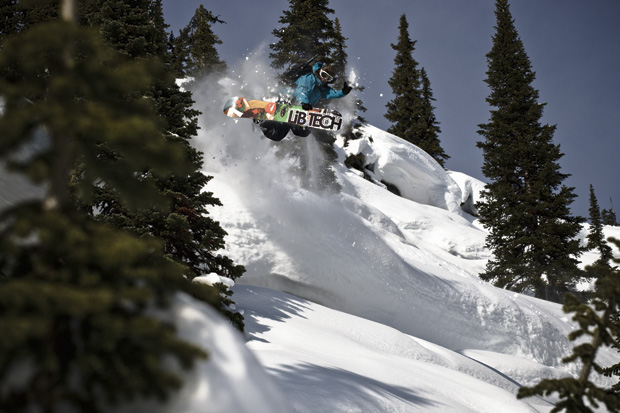
“I thought it was a wolverine, there was so much commotion going on. I had to shoot it quickly.” I haven’t the nerve to ask him how you “accidentally” trap a wolf, or why the Canadian government pays $50 for each wolf shot – or if wolves come back to seek vengeance for a lost loved one. Whatever the reasons, it’s all sitting uncomfortably with my sensitive vegetarian principles. But right out the door, or at least, a further twenty-minute snowmobile trek into the abyss, lies some epic terrain: steep Alaska style faces, classic pillow drops and a dozen square miles of rolling glacier. “How easy it is to sell out when there’s a couple of feet of pow on your doorstep,” I muse.
We’ve spent the day riding laps of such pillow lines, using two snowmobiles to shuttle each other back to the top of short runs. For me, it’s far from the kind of big mountain riding that I came to Canada for, and unlike most of the previous Deeper project trips I’ve joined, it’s not the terrain that’s testing my nerve and ability, but the art of managing 700 lbs of two-stroke machinery up, down and across some challenging terrain. Wrecking the sled would cost $10,000 so I’m learning, and learning fast.
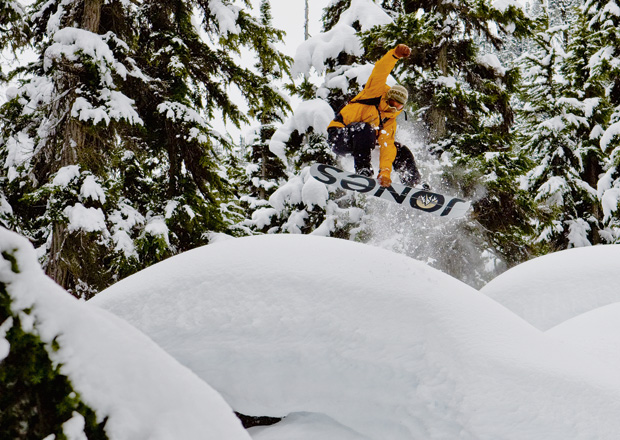
But let’s rewind a little. The reason for the change of plan – from splitboards to snowmobiles – is avalanche risk. Right now, the whole of interior B.C. is suffering a severe instability in its snowpack, meaning almost any steep slope could rip out at any time (only a week later, at nearby Revelstoke, two people are killed in a massive avalanche which sweeps through the crowd at a snowmobile festival). These definitely aren’t the kind of conditions to be gambling with, so the seriously steep terrain around here is firmly out of bounds. Unfortunately, it’s exactly this kind of terrain that’s needed for the Deeper film, so its stars Jeremy Jones and Jonaven Moore are forced to look elsewhere – leaving myself, filmer Garry Pendygrasse and riders Jason Baun and Johan Olofson to search for smaller, safe terrain to ride and shoot without them.
We sled out of the cabin each morning, ragging full tilt across the flat valley floor before beginning a winding slalom climb through the forest – a nimble balancing challenge made trickier by riding two-up on each sled. We spot fun lines to be ridden in the safety of the forest and run laps of these, bouncing down rollers and weaving between magnificent old fir trees. Snowmobile laps are fast, with the uplift proving almost as exhilarating (and as much of a work-out) as the run down. Truth be told, without the sleds we’d be like fish out of water: we’ve driven 60 kilometres down a broken dirt and ice road, then sledded a further 30 kilometres up to the cabin with gear trailers in tow, and even then we needed the sleds to get us into the available terrain. Splitboarding alone would have become a month long endeavor out here.
At one point, when my taxi doesn’t arrive for a while, I actually do split my board, pop on the skins and start hiking back up the sled track. For twenty minutes I’m lost in the silence of the forest, and my slow pace on the steady climb lets me absorb the beauty of my surroundings for the first time. Then, with a growl from the engine, I’m back on the sled and skimming effortlessly across a vast rolling glacier at 80 kilometres per hour. Above the treeline, the vastness of Canada becomes apparent in a sprawl of tumbling glaciers and rugged peaks. We ride the sled for miles along a safe ridge of glacial moraine, looking for small lines to hit and stopping to shoot a cliff drop or two. When, for a short time, I have the machine to myself and start getting to grips with its powder capabilities, I glimpse why snowmobiling can become so addictive. I try to rebalance my thoughts, torn between feelings of guilt from a life dictated by a green-conscience, and the heady swirl of endorphins delivered by 300 brake horsepower at the twist of a throttle.

Back at the cabin we stoke up the wood stove, chop firewood, brew some tea and put our boots in front of the fire to dry. With no cell-phone coverage and no electricity, life is simple; just four blokes in the middle of nowhere, surrounded by wolves. We chat about the day and discuss options for the next. From high on the moraine ridge we spied some easily accessible Alaska-style lines, but the snow stability issue keeps them teasingly out of range. We can look, but we can’t touch. We spend two more days riding laps of the local pillow lines, exploring a little further afield each time, before the powder begins its transformation to spring snow. With our food stocks nearly out anyway and the beer supply long since finished, we load the sled trailers and haul ourselves and our gear back to the trucks. Soon we are beating a retreat to Golden, where organic soya chai lattes in a civilised wholefood café contrast with our previous nights in the spartan cabin. Back on the radar, we check our phone messages. There’s a storm coming and it’s going to hit the coastal mountains. It’s enough of a sniff to put splitboarding back on the agenda, so we pack our kit for Pemberton and leave Justin to polish his gun…
Interior B.C is strewn with backcountry skier cabins. Some you fly heli’s to, some you drive a snowcat to, most are fully catered. Our home for the next couple of days is none of these things. We sit out a couple of rainy days in Pemberton, letting the snow pile up on the surrounding peaks, and finally prepare our gear for the ninety minute skin to our hut. With camera and filming gear, sleeping bags, food, changes of clothing and a few logs of firewood to haul in, we’ve converted some basic plastic sledges into gear trailers that we tow behind us using climbing harnesses. Even with this additional effort, it’s refreshing to be back on the splitboards. A sled ride in to the hut would probably take no more than fifteen minutes, and for a moment I’m tempted to ask Garry if he knows someone who could shuttle us in. But then as soon as we’re underway, the tranquility of our surroundings makes me glad I haven’t.

Out cabin is technically an illegal construction, being built on forestry land by local backcountry skiers to use for touring. In remembrance to a skier who was killed in an avalanche it has been named ‘Keith’s Hut’. Being illegal also means it’s hidden away in the trees, out of sight from the fire-road on which we’re skinning. It’s only as darkness really starts to draw in that Garry admits he’s never actually been to the place before, and I start to wonder if we’ll be digging a snowhole to sleep in. Garry is local though, and has a feeling for these things, and just as the blackness seals out the last of the daylight we emerge into a small clearing to find it: a simple A-frame cabin about five metres square.
We’re alone and the hut sits in darkness. Inside we light the wood stove, instantly filling the room with thick smoke. The chimney, it seems, is blocked by ice. Over the next couple of days the ice will disappear, but not before filling the hut with more choking fumes each time the stove is re-lit. The smell will accompany me on my flight home a week later, raising eyebrows at airport security.
We brew tea, crack open a flask of brandy and munch on freeze-dried camp dinners before unfurling our sleeping bags and Thermarest mattresses for one of the most peaceful nights sleep I’ll probably ever have. With no trapper to reap revenge upon, the wolves are noticeable by their absence. Come morning, we’re joined by Jonaven Moore and Dave Basterrechia, who started their splitboard approach just as the sun began rising. The mountains here haven’t suffered the same weak layer in the snowpack, but this is the first decent snowfall they’ve seen for a while. Outside the cabin sits a good half metre of fresh: perfect for the terrain that, according to Garry’s Google Earth research, sits within an hour’s hike.
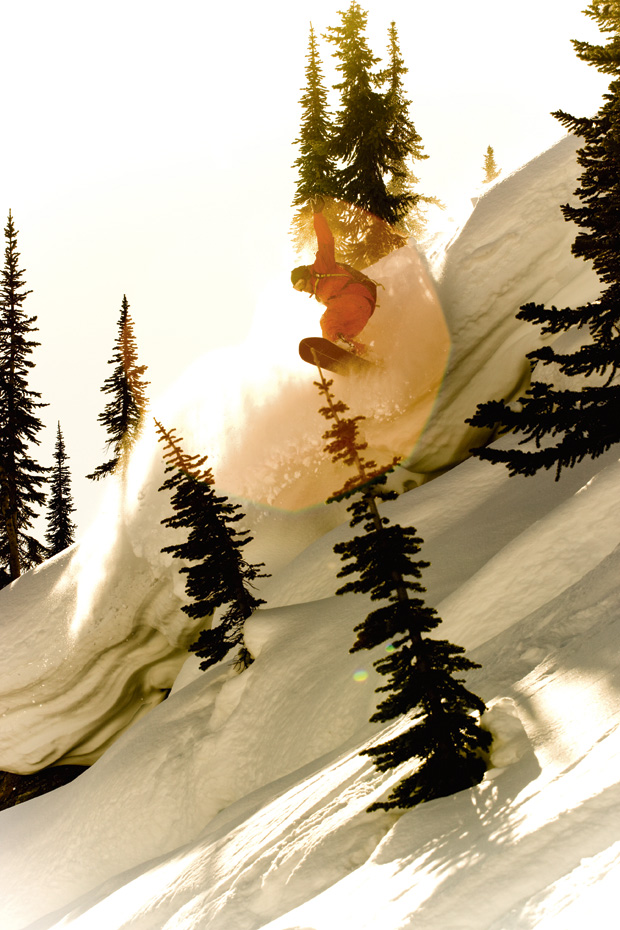
We polish off bagel breakfasts, stuff extra layers and energy bars into our backpacks, and re-attach skins to our split boards. After our last cabin adventure, it seems strange not to be throwing a leg over a snowmobile, and as I look up through the trees at the climb ahead of us, I’m less than enthusiastic for the energetic challenge ahead. I know though, that in an hour or two’s time when I’m stood at the top of the chute we’ve lined up, my sweat-soaked base layer will seem a small price to pay for the enjoyment ahead. Nobody pretends splitboarding is easy; it isn’t. But it hands down beats snowshoeing and carrying your board on your back, especially when your pack is already laden with several kilos of camera gear, a shovel, probe and food. It is surprising, though, how quickly you can cover terrain on a splitboard – and once a skin trail is in, it makes a fast superhighway to reuse again and again. Hiking the same faces we’ll be riding back down means we get to read the snow, to see how its layers have formed and assess its stability. This is one of the reasons that Jeremy Jones and Jonaven Moore have taken to splitboarding so enthusiastically. They can make those on-the-ground assessments that heli drops, or even snowmobile shuttles, don’t allow.
I watch from my vantage point, perched among the trees, as Jonaven slashes his way down the couloir. He’s milking every last drop of enjoyment – just reward for the two hours of effort it’s taken us to reach the spot.”
The weather proves schizophrenic, and it’s through alternating bursts of sunshine and fluries of snow that we zigzag our way up the final steep approach to our chosen couloir: a healthy 800 metre run of 40 degree pitch set between dramatic cliff faces. On a snowmobile we could climb this face in a matter of minutes, but the approach through the tight pillow-laden forest would have been a true sledneck challenge – and I’m not sure if I’d really trust my rudimentary piloting skills. I’m happier on my splitboard, even breaking trail through half a metre of pow.
Dave Basterrechia decides on an entry into the chute from the side – one that involves riding out onto a 50 degree exposed shelf that funnels down into a tight, four metre wide pinch in the rock. It takes us half an hour of clambering around in the trees above the couloir to ascertain if his line actually ‘goes through’ or not, but once we’ve seen it does, he’s ready to drop in. Dave has spent his time on the pro circuit riding for Santa Cruz back in the day, but the backcountry is his bag now. He’s at home here and makes his line look easy, kicking up huge rooster tails. He disappears from view as he enters the pinch before shooting out of the bottom of his line like he’s fired from a canon.
Next Jonaven drops into the main chute, laying out leisurely turns one after another. I watch from my vantage point, perched among the trees, as he slashes his way down the couloir. He’s milking every last drop of enjoyment – just reward for the two hours of effort it’s taken us to reach the spot. When I finally strap in and follow his line, suddenly the chute seems steeper than it looked from the top, and longer. It’s committing terrain. I pick up speed and, trusting the snowpack I’ve been hiking up all afternoon, let my board run on, faster and faster to the bottom of the chute. It’s the best run I’ve had all winter. Maybe it’s the snow, maybe it’s the full 800 metres of perfect pitch, or maybe it’s the reward for our efforts. More likely it’s a combination of all these things.

By the time we bounce down the last pillows and snake our way back to our secret cabin, we’re all still sweaty but grinning inanely. We kick snow from our boots, clamber into the hut and crank up the stove, knowing that no Afghans have had to be shot to fuel our day of snowboarding fun. By nightfall our cabin has filled up with another ten backcountry skiers coming in for the weekend. Fitting 14 people and all their gear into the hut is a squeeze, and later – after every drop of alcohol has been shared and the sleeping bags are unrolled – there isn’t a spare inch of floor space left unoccupied. Stories are swapped and tales of epic powder adventures related, in a “it was this big” fishing style. Lit only by the flicker of our stove and accompanied by a chorus of snoring from other bearded backcountry types, I drift into a deep sleep, happy to have escaped the confines of normality again, to leave the hecticness of civilisation behind. Life is simple if you know where to look for it. And it doesn’t get much simpler than splitboards and cabins.
